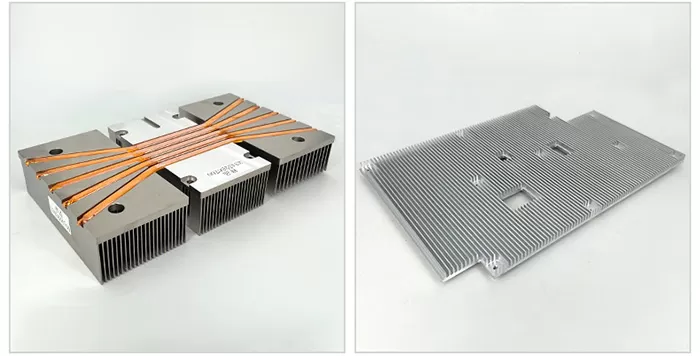
The heat sink installation steps for new energy vehicles are usually as follows:
1. Determine the installation location: Determine the installation location of the radiator based on the vehicle design and cooling requirements.Usually the radiator will be installed at the front of the engine or around the electric motor to effectively dissipate heat.
2. Remove the original heat sink: If you are replacing the heat sink, you need to remove the original heat sink first.
3. Mounting bracket: Depending on the size and shape of the heat sink, install a bracket or bracket structure to secure the heat sink to the vehicle.
4. Connect the pipes: Connect the water inlet and outlet of the heat sink to the vehicle's cooling system pipes.Make sure the connections are tight and there are no leaks.
5. Fix the heat sink: Install the heat sink on the bracket and use screws to secure it to the vehicle.Make sure the heat sink is securely mounted and not wobbly or loose.
6. Connect the power supply: If the heat sink requires power supply, connect the heat sink power cord to the vehicle electrical system to ensure that the power supply is normal.
7. Test the heat dissipation effect: After the installation is completed, start the vehicle, observe the working condition of the heat sink, and check whether there is any water leakage or abnormality.Make sure the heat sink is working properly.
8. Debugging and adjustment: According to the actual situation, debug the working parameters of the heat sink, such as fan speed, temperature control, etc., to achieve the best heat dissipation effect.
Specific installation steps may vary depending on vehicle model and heat sink type.During the installation process, you need to pay attention to the position and direction of the heat sink to ensure its heat dissipation effect and stability.At the same time, you also need to pay attention to the sealing of the heat sink to avoid problems such as water leakage.Since 2003, Pioneer Thermal Heatsink has been focusing on thermal management field. Our capabilities cover a wide range that provide you new energy vehicle battery liquid cooling system, one-stop heat sink solution quicker and easier.
1. Determine the installation location: Determine the installation location of the radiator based on the vehicle design and cooling requirements.Usually the radiator will be installed at the front of the engine or around the electric motor to effectively dissipate heat.
2. Remove the original heat sink: If you are replacing the heat sink, you need to remove the original heat sink first.
3. Mounting bracket: Depending on the size and shape of the heat sink, install a bracket or bracket structure to secure the heat sink to the vehicle.
4. Connect the pipes: Connect the water inlet and outlet of the heat sink to the vehicle's cooling system pipes.Make sure the connections are tight and there are no leaks.
5. Fix the heat sink: Install the heat sink on the bracket and use screws to secure it to the vehicle.Make sure the heat sink is securely mounted and not wobbly or loose.
6. Connect the power supply: If the heat sink requires power supply, connect the heat sink power cord to the vehicle electrical system to ensure that the power supply is normal.
7. Test the heat dissipation effect: After the installation is completed, start the vehicle, observe the working condition of the heat sink, and check whether there is any water leakage or abnormality.Make sure the heat sink is working properly.
8. Debugging and adjustment: According to the actual situation, debug the working parameters of the heat sink, such as fan speed, temperature control, etc., to achieve the best heat dissipation effect.
Specific installation steps may vary depending on vehicle model and heat sink type.During the installation process, you need to pay attention to the position and direction of the heat sink to ensure its heat dissipation effect and stability.At the same time, you also need to pay attention to the sealing of the heat sink to avoid problems such as water leakage.Since 2003, Pioneer Thermal Heatsink has been focusing on thermal management field. Our capabilities cover a wide range that provide you new energy vehicle battery liquid cooling system, one-stop heat sink solution quicker and easier.


 +86-18902844286
+86-18902844286
 E-mail
E-mail
